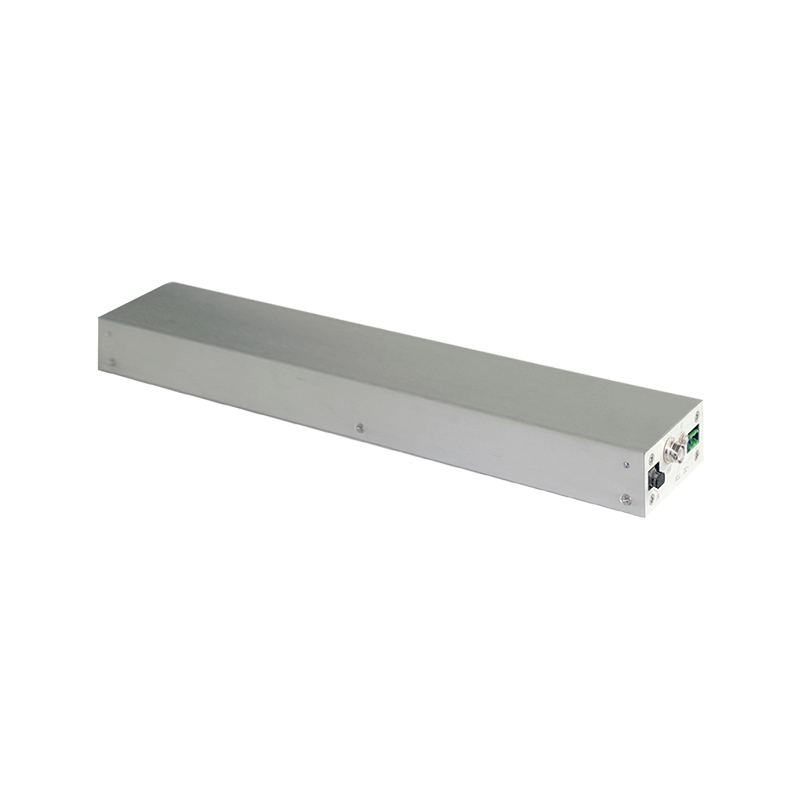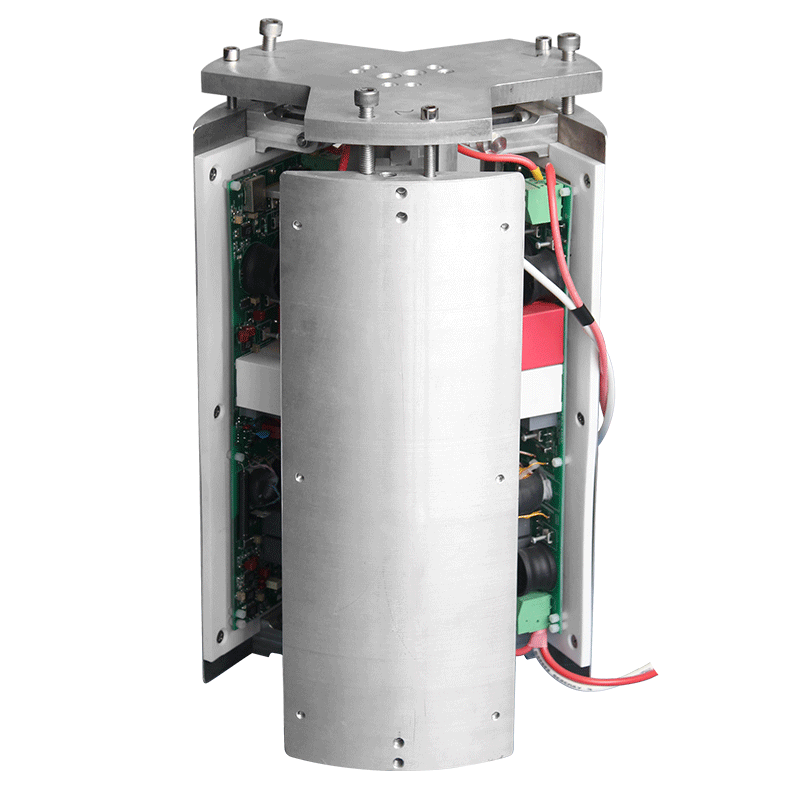The Process of High-Voltage Power Supplies for Ion Implantation: Technical and Application Analysis
Introduction
Ion implantation technology is one of the key processes in modern semiconductor manufacturing, widely used in chip fabrication, photovoltaic industries, and material modification. In this process, high-voltage power supplies serve as a core component, providing stable high voltage to ion accelerators to ensure that the energy and direction of the ion beam meet process requirements. This article explores the operational process of high-voltage power supplies for ion implantation from three aspects: technical principles, workflow, and practical applications, while analyzing optimization strategies for different scenarios.
1. Technical Characteristics of High-Voltage Power Supplies for Ion Implantation
The core of the ion implantation process is to accelerate charged particles (ions) through an electric field, causing them to collide with the surface of the target material at high energy to achieve doping or modification. High-voltage power supplies play a crucial role in this process, with their main technical characteristics including:
1. High Voltage Output
Ion implantation requires voltages ranging from several thousand volts to hundreds of thousands of volts to accelerate ions. Therefore, high-voltage power supplies must be able to stably output high voltage while maintaining excellent insulation performance.
2. High-Precision Adjustment Capability
Different doping depths and concentrations require varying ion energies, necessitating precise voltage regulation from the power supply, typically with a resolution of 0.1% or higher.
3. Fast Response Capability
In dynamic processes, high-voltage power supplies need to quickly adjust output voltage to adapt to real-time changes in process requirements, such as multi-step implantation or multi-energy modes.
4. Low Ripple and High Stability
Voltage fluctuations directly affect the uniformity and stability of the ion beam. Therefore, power supply design must minimize ripple and enhance long-term operational reliability.
5. Safety Protection Mechanisms
During operation, high-voltage power supplies may face risks such as overvoltage, overcurrent, or short circuits. Comprehensive protection circuits are required to ensure the safety of both equipment and operators.
2. Workflow of High-Voltage Power Supplies for Ion Implantation
The workflow of high-voltage power supplies for ion implantation can be divided into several stages, each playing a critical role in the final process outcome.
1. System Initialization
Before starting the high-voltage power supply, system initialization is necessary to ensure the equipment is in a safe state. Specific steps include:
Checking whether power connections are correct and ensuring reliable electrical connections between the high-voltage end and the ion accelerator.
Calibrating power supply output parameters, such as initial voltage values and current limits.
Activating the cooling system (e.g., air or liquid cooling devices) to prevent damage to power modules due to high temperatures.
2. Voltage Ramp-Up Process
Ion implantation processes require a gradual increase in voltage to the target value. This process must strictly control the ramp-up rate to avoid transient shocks that could damage the equipment. Specific operations include:
Setting a voltage ramp-up curve, typically using linear or stepwise ramp-up methods.
Real-time monitoring of output voltage and current to ensure they remain within the specified range.
Immediately stopping the ramp-up and triggering protection mechanisms if abnormalities (e.g., overcurrent or short circuits) are detected.
3. Stable Operation Phase
Once the voltage reaches the target value, the high-voltage power supply enters the stable operation phase, providing continuous high-voltage output to the ion accelerator. During this phase, the following points should be noted:
Maintaining output voltage stability by compensating for environmental temperature changes or load fluctuations through feedback control systems.
Regularly recording operational data, such as output voltage, current, and ripple coefficients, for subsequent analysis.
Monitoring equipment status to promptly identify potential faults, such as module overheating or insulation degradation.
4. Dynamic Switching Process
In some complex ion implantation processes, it may be necessary to dynamically adjust the output voltage to accommodate different implantation energies. For example, in multi-step implantation or multi-energy modes, the high-voltage power supply needs to quickly switch output parameters. Key considerations for this process include:
Ensuring smooth and delay-free switching to avoid affecting the stability of the ion beam.
Using digital signal processors (DSPs) or field-programmable gate arrays (FPGAs) to achieve precise parameter control.
Optimizing switching algorithms to reduce transition time while avoiding overshoot or undershoot phenomena.
5. Shutdown and Maintenance
After the process is completed, it is necessary to gradually reduce the voltage and shut down the high-voltage power supply. The shutdown process typically includes:
Setting a voltage ramp-down curve to ensure a slow decrease in voltage to zero, avoiding sudden power-off shocks to the equipment.
Stopping the cooling system and performing cleaning and maintenance only after the equipment has completely cooled down.
Recording operational logs, analyzing equipment performance, and formulating maintenance plans.
3. Practical Applications of High-Voltage Power Supplies for Ion Implantation
The workflow of high-voltage power supplies for ion implantation exhibits diverse characteristics in different application scenarios. Below are several typical application cases:
1. Semiconductor Manufacturing
In semiconductor manufacturing, ion implantation is used for doping silicon wafers to form PN junctions or other functional regions. The stability and precision of the high-voltage power supply directly impact the doping effect. For example, in shallow junction processes, the power supply needs to provide low-energy but highly precise voltage output to achieve sub-micron-level doping depths.
2. Photovoltaic Industry
In solar cell manufacturing, ion implantation is used to produce high-efficiency crystalline silicon cells. By optimizing the output parameters of the high-voltage power supply, doping uniformity can be improved, thereby enhancing photoelectric conversion efficiency. Additionally, multi-step implantation processes require the power supply to have rapid switching capabilities to accommodate different doping layer requirements.
3. Material Modification
Ion implantation technology is also widely used for surface modification of metals, ceramics, and polymers. By adjusting the output voltage of the high-voltage power supply, the energy and dose of ions can be altered to improve material hardness, wear resistance, and corrosion resistance. For example, in the aerospace field, ion implantation can be used to enhance the surface performance of turbine blades.
4. Scientific Research
In fundamental scientific research, high-voltage power supplies for ion implantation are used in accelerator experiments, nuclear physics research, and materials science exploration. These applications place higher demands on the flexibility and reliability of the power supply, such as supporting a wide range of voltage adjustments and long-term stable operation.
4. Optimization Strategies for the Workflow of High-Voltage Power Supplies for Ion Implantation
To further enhance the effectiveness of the ion implantation process, the workflow of high-voltage power supplies can be optimized in the following ways:
1. Intelligent Control
Introduce artificial intelligence algorithms to automatically adjust power supply operating parameters based on real-time monitoring data, reducing human intervention. For example, machine learning can predict load changes and pre-adjust output voltage accordingly.
2. Modular Design
Divide the power supply into multiple functional modules for flexible configuration and expansion according to specific needs. For example, adding independent pulse generator modules to support more complex process requirements.
3. Efficient Thermal Management
Heat generated during the operation of high-voltage power supplies may affect their stability, so thermal design needs to be optimized, such as using a combination of liquid and air cooling.
4. Electromagnetic Compatibility Improvements
Electromagnetic interference may occur during the operation of high-voltage power supplies, affecting the normal operation of other equipment. By optimizing circuit layout and shielding measures, interference can be effectively reduced.
5. Redundant Design
Introducing redundancy in key components (such as switching elements and controllers) enhances system reliability and fault tolerance.
5. Conclusion
The workflow of high-voltage power supplies for ion implantation is a critical factor in determining process quality and efficiency. By reasonably planning each stage of the operation, optimizing design, and combining it with practical application scenarios, the performance of ion implantation systems can be significantly improved. With the continuous emergence of new materials and processes, the technology of high-voltage power supplies will continue to evolve, bringing more possibilities to ion implantation technology. In the future, intelligent, modular, and efficient power supply designs will become mainstream trends, driving ion implantation technology to new heights.




















